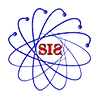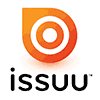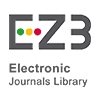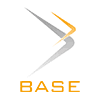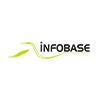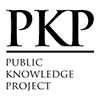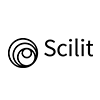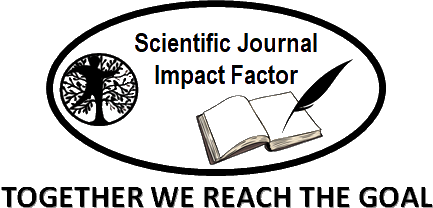Assessing the Pedagogical Impact of Dynamic Assessment on Students’ Writing Achievement
Abstract
Dynamic assessment is crucial in writing instruction as it combines assessment with teacher support to ascertain students’ learning capacity. Dynamic assessment prioritises the writing process above the final output, enabling teachers to assist students in developing ideas, text organisation, and language usage in accordance with their capabilities. This study aimed to examine the efficacy of dynamic assessment on students’ ability to write and to investigate the perceptions of both teachers and students over its implementation in the classroom. This study employed a mixed method approach, using both quantitative and qualitative data. The quantitative data were collected through a quasi-experimental design involving pre- and post-tests. Participants in this study consisted of 32 students from Class VIII A and 32 students from Class VIII B at public junior high school in Tellu Siattinge. The qualitative data were obtained through interviews, with the English teacher and five students from the experimental class to support and deepen the interpretation of the quantitative findings. The findings revealed a statistically significant disparity between the control and experimental groups. The statistical analysis revealed a significant value Sig. (2-tailed) of 0.018, which is below the significance threshold of 0.05. The control group demonstrated enhancement, with the mean score rising from 59.49 (SD = 5.65) on the pretest to 71.28 (SD = 6.23) on the post-test. The experimental group exhibited significant enhancement, with the mean score rising from 57.49 (SD = 8.12) on the pre-test to 75.03 (SD = 6.14) on the post-test. Furthermore, interviews with teacher and students indicated that dynamic assessment effectively identified students’ learning needs and enabled the provision of relevant feedback through mediation throughout the learning process. Mediation in dynamic assessment fosters enhanced interactive and collaborative learning.
Keywords
Full Text:
PDFReferences
Afshari, H., Amirian, Z., & Tavakoli, M. (2020). Applying group dynamic assessment procedures to support EFL writing development: Students’ and teachers’ perceptions in focus. Journal of Writing Research, 11(3), 445–476. https://doi.org/10.17239/jowr-2020.11.03.02
AlAdl, A. E. (2023). The effects of dynamic assessment on the writing classroom and students’ attitude: The experience of English department students. AlʿUlūm At-Tarbawiyya (Educational Sciences), 31(2), 1–23. https://doi.org/10.21608/ssj.2023.309111
Alavi, S. M., & Taghizadeh, M. (2014). Dynamic assessment of writing: The impact of implicit/explicit mediations on L2 learners’ internalization of writing skills and strategies. Educational Assessment, 19(1), 1–16. https://doi.org/10.1080/10627197.2014.869446
Azizi, M., Pavlikova, M., Slobodová Nováková, K., & Baghana, J. (2021). The differential effects of dynamic assessment versus coded focused feedback on the process writing of EFL learners. European Journal of Contemporary Education, 10(2), 273–284. https://doi.org/10.13187/ejced.2021.2.273
Babamoradi, P., Nasiri, M., & Mohammadi, E. (2018). Learners’ attitudes toward using dynamic assessment in teaching and assessing IELTS writing task one. International Journal of Language Testing, 8(1), 1-11. Retrieved from https://www.ijlt.ir/article_114297_a422a4e9acc406559243bbdd072243e6.pdf
Bavali, M., Yamini, M., & Sadighi, F. (2011). Dynamic assessment in perspective: Demarcating dynamic and non-dynamic boundaries. Journal of Language Teaching and Research, 2(4), 895–902. https://doi.org/10.4304/jltr.2.4.895-902
Brown, H. D. (2013). Language assessment: Principles and classroom practices (2nd ed.). Pearson Education.
Burns, A. (2009). Doing action research in English language teaching. Routledge. https://doi.org/10.4324/9780203863466
Carter, N., Bryant-Lukosius, D., DiCenso, A., Blythe, J., & Neville, A. J. (2014). The use of triangulation in qualitative research. Oncology Nursing Forum, 41(5), 545–547. https://doi.org/10.1188/14.ONF.545-547
Chien, C.-W. (2024). Influence of dynamic assessment on Taiwanese undergraduates and graduate students’ academic writing of research proposals. Language Learning in Higher Education, 14(2), 357–378. https://doi.org/10.1515/cercles-2023-0031
Cohen, L., Manion, L., & Morrison, K. (2017). Research methods in education (8th ed.). Routledge. https://doi.org/10.4324/9781315456539
Creswell, J. W. (2012). Educational research: Planning, conducting, and evaluating quantitative and qualitative research (4th ed.). Pearson.
Daly, C., & Lauchlan, F. (2023). Applying dynamic assessment in schools: A practical approach to improve learning (1st ed.). Jessica Kingsley Publishers
Daneshfar, S., & Moharami, M. (2018). Dynamic assessment in Vygotsky’s sociocultural theory: Origins and main concepts. Journal of Language Teaching and Research, 9(3), 600-610. https://doi.org/10.17507/jltr.0903.20
Davin, K. J., & Donato, R. (2013). Student collaboration and teacher‐directed classroom dynamic assessment: A complementary pairing. Foreign Language Annals, 46(1), 5–22. https://doi.org/10.1111/flan.12012
Dewi, D. Z. P. (2024). The effectiveness of teacher feedback toward students’ writing competence at 11th grade in SMKN 3 Batam [Master's thesis, Universitas Negeri Yogyakarta].
Ebadi, S., & Rahimi, M. (2019). Mediating EFL learners’ academic writing skills in online dynamic assessment using Google Docs. Computer Assisted Language Learning, 32(5–6), 527–555. https://doi.org/10.1080/09588221.2018.1527362
Estaji, M., & Ameri, A. F. (2020). Dynamic assessment and its impact on pre-intermediate and high-intermediate EFL learners’ grammar achievement. Cogent Education, 7(1), 1740040. https://doi.org/10.1080/2331186X.2020.1740040
Etemadi, S. H., & Abbasian, G. (2022). Dynamic assessment and EFL learners writing journey: Focus on DA modalities and writing revision types. Teaching English Language, 17(1). https://doi.org/10.22132/tel.2022.162923
Harmer, J. (2011). How to teach writing (2nd ed.). Longman, Pearson Education.
Hasson, N. (2018). The dynamic assessment of language learning (1st ed.). Routledge. https://doi.org/10.4324/9781315175423
Hyland, K. (2004.) Genre and second language writing. University of Michigan Press.
Kang, E., & Hwang, H.-J. (2021). Ethical conducts in qualitative research methodology: Participant observation and interview process. Journal of Research and Publication Ethics, 2(2), 5–10. https://doi.org/10.15722/JRPE.2.2.202109.5
Kayaalp, F., Meral, E., & Başci Namli, Z. (2022). An analysis of the effect of writing-to-learn activities regarding students’ academic achievement and self-regulation skills in writing. Participatory Educational Research, 9(1), 324–348. https://doi.org/10.17275/per.22.18.9.1
Knapp, P., & Watkins, M. (2005). Genre, text, grammar: Technologies for teaching and assessing writing. University of NSW Press.
Kozulin, A., & Garb, E. (2002). Dynamic assessment of EFL text comprehension. School Psychology International, 23(1), 112–127. https://doi.org/10.1177/0143034302023001733
Kozulin, A., & Presseisen, B. Z. (1995). Mediated learning experience and psychological tools: Vygotsky’s and Feuerstein’s perspectives in a study of student learning. Educational Psychologist, 30(2), 67–75. https://doi.org/10.1207/s15326985ep3002_3
Lantolf, J. P., & Poehner, M. E. (2004). Dynamic assessment of L2 development: Bringing the past into the future. Journal of Applied Linguistics and Professional Practice, 49–72. https://doi.org/10.1558/japl.v1.i1.49
Lantolf, J. P., & Poehner, M. E. (2011). Dynamic assessment in the classroom: Vygotskian praxis for second language development. Language Teaching Research, 15(1), 11–33. https://doi.org/10.1177/1362168810383328
Lincoln, Y. S., & Guba, E. G. (1985). Naturalistic inquiry. Sage Publications.
Mauludin, L. A., & Ardianti, T. M. (2021). Enhancing students’ genre writing skills in an English for specific purposes class: A dynamic assessment approach. MEXTESOL Journal, 45(3), 1–12. https://doi.org/10.61871/mj.v45n3-13
McMillan, J. H. (2014). Classroom assessment: Principles and practice for effective standards-based instruction (4th ed.). Pearson Education.
Miles, M. B., Huberman, A. M., & Saldaña, J. (2014). Qualitative data analysis: A methods sourcebook (3rd ed.). Sage.
Mohammadzadeh, A. (2024). Dynamic assessment in L2 writing performance: The case of Iranian EFL learners. Journal of Applied Linguistics Studies, 3(1), 173–182. https://oiccpress.com/jals/article/view/5599
Noprianto, E. (2017). Students' descriptive text writing in SFL perspectives. IJELTAL: Indonesian Journal of English Language Teaching and Applied Linguistics, 2(1), 65-76. https://doi.org/10.21093/ijeltal.v2i1.53
Nunan, D. (Ed.). (2003). Practical English language teaching. McGraw-Hill.
O’Leary, M. (2020). Classroom observation: A guide to the effective observation of teaching and learning (2nd ed.). Routledge. https://doi.org/10.4324/9781315630243
Poehner, M. E. (2007). Beyond the test: L2 dynamic assessment and the transcendence of mediated learning. The Modern Language Journal, 91(3), 323–340. https://doi.org/10.1111/j.1540-4781.2007.00583.x
Poehner, M. E. (2008). Dynamic assessment: A Vygotskian approach to understanding and promoting L2 development. Springer. https://doi.org/10.1007/978-0-387-75775-9
Poehner, M. E., & Infante, P. (2017). Mediated development: A Vygotskian approach to transforming second language learner abilities. TESOL Quarterly, 51(2), 332–357. https://doi.org/10.1002/tesq.308
Poehner, M. E., & Lantolf, J. P. (2005). Dynamic assessment in the language classroom. Language Teaching Research, 9(3), 233–265. https://doi.org/10.1191/1362168805lr166oa
Poehner, M. E., & Lantolf, J. P. (2013). Bringing the ZPD into the equation: Capturing L2 development during computerized dynamic assessment (C-DA). Language Teaching Research, 17(3), 323–342. https://doi.org/10.1177/1362168813482935
Poehner, M. E., & Wang, Z. (2021). Dynamic assessment and second language development. Language Teaching, 54(4), 472–490. https://doi.org/10.1017/S0261444820000555
Prastikawati, E. F., Wiyaka, W., & Adi, A. P. K. (2020). Online backchannel as a formative assessment in improving writing skills. Journal on English as a Foreign Language, 10(2), 359–384. https://doi.org/10.23971/jefl.v10i2.2044
Pu, L., Heng, R., & Cao, C. (2022). The effects of genre on the syntactic complexity of argumentative and expository writing by Chinese EFL learners. Frontiers in Psychology, 13, 1047117. https://doi.org/10.3389/fpsyg.2022.1047117
Purnamasari, D., Hidayat, D. N., & Kurniawati, L. (2021). An analysis of students’ writing skill on English descriptive text. English Education: Jurnal Tadris Bahasa Inggris, 14(1), 101–114. https://doi.org/10.24042/ee-jtbi.v14i1.7943
Rad, H. S. (2021). Exploring use of mobile-mediated hybrid dynamic assessment in improving EFL learners’ descriptive writing skills. Computer Assisted Language Learning Electronic Journal, 22(1), 111–127. https://callej.org/index.php/journal/article/view/324
Rahayu, R., Rosita, R., Rahayuningsih, Y. S., Hernawan, A. H., & Prihantini, P. (2022). Implementasi kurikulum merdeka belajar di sekolah penggerak. Jurnal Basicedu, 6(4), 6313–6319. https://doi.org/10.31004/basicedu.v6i4.3237
Rashidi, N., & Bahadori Nejad, Z. (2018). An investigation into the effect of dynamic assessment on the EFL learners’ process writing development. Sage Open, 8(2), 2158244018784643. https://doi.org/10.1177/2158244018784643
Sa’adah, A. R. (2020). Writing skill in teaching English: An overview. EDUCASIA: Jurnal Pendidikan, Pengajaran, dan Pembelajaran, 5(1), 21–35. https://doi.org/10.21462/educasia.v5i1.41
Shabani, K., Khatib, M., & Ebadi, S. (2010). Vygotsky’s zone of proximal development: Instructional implications and teachers’ professional development. English Language Teaching, 3(4), 237. https://doi.org/10.5539/elt.v3n4p237
Shell, D. F., Murphy, C. C., & Bruning, R. H. (1989). Self-efficacy and outcome expectancy mechanisms in reading and writing achievement. Journal of Educational Psychology, 81(1), 91–100. https://doi.org/10.1037/0022-0663.81.1.91
Shrestha, P. N. (2020). Dynamic assessment of students’ academic writing: Vygotskian and systemic functional linguistic perspectives (1st ed.). Springer. https://doi.org/10.1007/978-3-030-55845-1
Shrestha, P., & Coffin, C. (2012). Dynamic assessment, tutor mediation and academic writing development. Assessing Writing, 17(1), 55–70. https://doi.org/10.1016/j.asw.2011.11.003
Sugiyono. (2017). Metode penelitian kuantitatif, kualitatif, dan R&D. Alfabeta.
Swanson, H. L., & Howard, C. B. (2005). Children with reading disabilities: Does dynamic assessment help in the classification? Learning Disability Quarterly, 28(1), 17–34. https://doi.org/10.2307/4126971
Toba, R., Noor, W. N., & Sanu, L. O. (2019). The current issues of Indonesian EFL students’ writing skills: Ability, problem, and reason in writing comparison and contrast essay. Dinamika Ilmu, 19(1), 57–73. https://doi.org/10.21093/di.v19i1.1506
Tzuriel, D. (2013). Mediated learning experience and cognitive modifiability. Journal of Cognitive Education and Psychology, 12(1), 59–80. https://doi.org/10.1891/1945-8959.12.1.59
Vergara Cabarcas, L. K., Castellon Barrios, D. J., López Caraballo, J. L., Vásquez Rossi, C. A., & Becker Arroyo, E. A. (2022). Dynamic assessment approach in language teaching: A review. Zona Próxima, 30, 82–99. https://doi.org/10.14482/zp.30.371.3
Vygotskij, L. S., & Cole, M. (1981). Mind in society: The development of higher psychological processes. Harvard University Press.
Vygotsky, L. S. (1978). Mind in society: The development of higher psychological processes (M. Cole, V. John-Steiner, S. Scribner, & E. Souberman, Eds. & Trans.). Harvard University Press.
Wass, R., & Golding, C. (2014). Sharpening a tool for teaching: The zone of proximal development. Teaching in Higher Education, 19(6), 671–684. https://doi.org/10.1080/13562517.2014.901958
Winna, W., & Sabarun, S. (2023). The language assessment in teaching-learning English. DIAJAR: Jurnal Pendidikan dan Pembelajaran, 2(4), 413–419. https://doi.org/10.54259/diajar.v2i4.1894
Xian, L. (2020). The effectiveness of dynamic assessment in linguistics accuracy in EFL writing: An investigation assisted by online scoring systems. Language Teaching Research Quarterly, 18, 98–114. https:// doi.org/10.32038/ltrq.2020.18.07
Xiaoxiao, L., & Yan, L. (2010). A case study of dynamic assessment in EFL process writing. Chinese Journal of Applied Linguistics, 33(1), 24–40. Retrieved from https://files.eric.ed.gov/fulltext/EJ1270037.pdf
DOI: http://dx.doi.org/10.18415/ijmmu.v12i9.7046
Refbacks
- There are currently no refbacks.
Copyright (c) 2025 International Journal of Multicultural and Multireligious Understanding

This work is licensed under a Creative Commons Attribution-NonCommercial-NoDerivatives 4.0 International License.
https://ijmmu.com
editor@ijmmu.com
facebook.com/ijmmu
Copyright © 2014-2018 IJMMU. All rights reserved.










